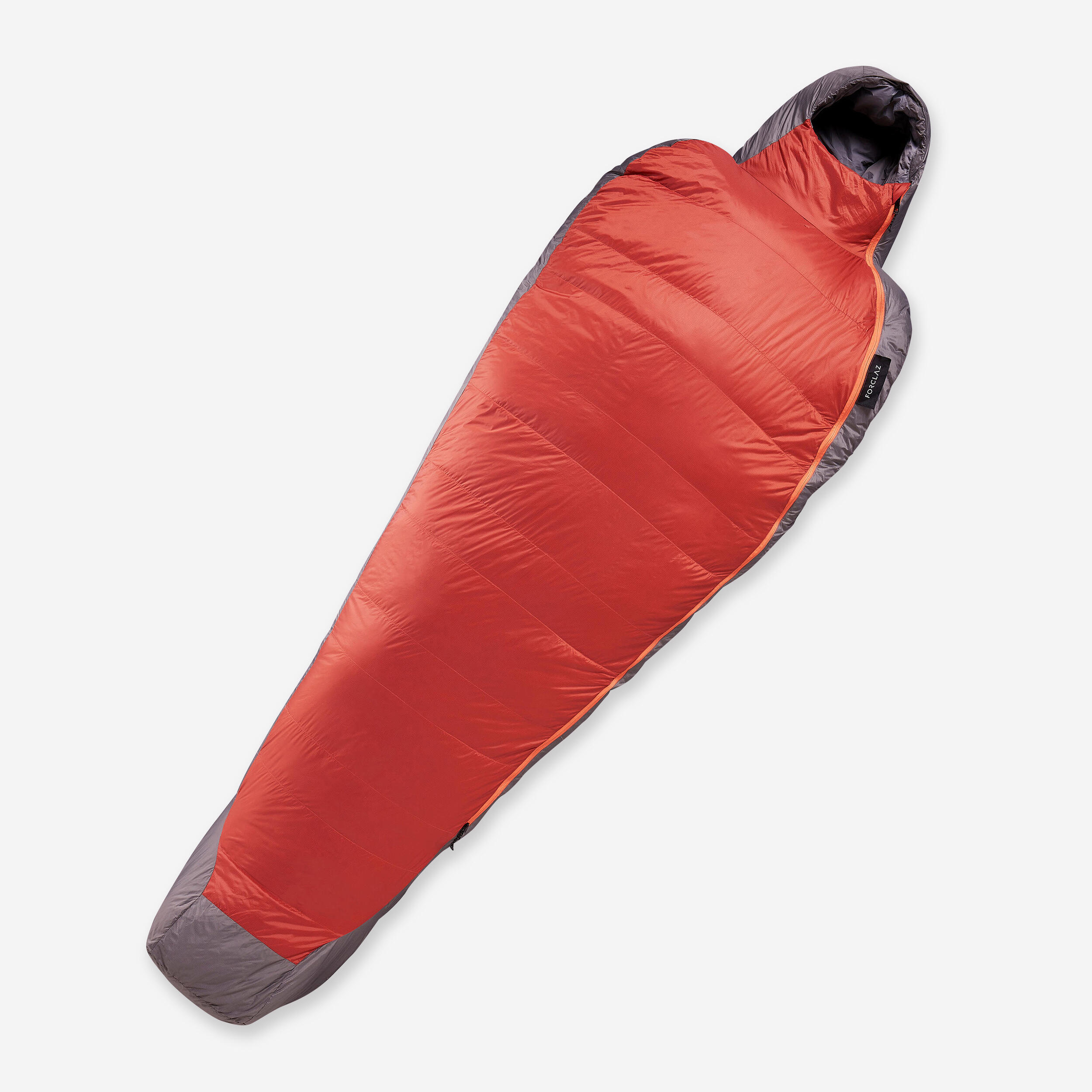



















forclaz
Camping Sleeping Bag -5°C to 0°C – MT 900 Dark Sepia
$240.00
You can sleep at temperatures between -5°C to 0°C with this down and feather sleeping bag. This sleeping bag is warm and light thanks to the loft (800 cuin) of the down used. It is also very compressible. Body shape and adjustable hood with good coverage and a drawstring.
4.8/5
(5 )
5
4
4
1
3
0
2
0
1
0
100%
Thu, Feb 29, 2024
Perfect for tracking
Patrick
-
: 3 to 8 weeks
: [object Object]
Packs well- a lot warmer than I thought it would be even in -4
| Sleep quality | 4 | |
| Optimum temperature | 5 | |
| Easy transport | 5 |
Wed, Feb 28, 2024
Best bike packing sleeping bag
Gregory
-
: 3 to 8 weeks
: [object Object]
Very light and easily packed small to fit in back pack. Very warm and strong zips. Definitely the best lightweight sleeping bag
| Easy transport | 5 | |
| Sleep quality | 5 | |
| Optimum temperature | 5 |
Tue, Nov 07, 2023
Excellent
Singh
: [object Object]
Lightweight
Fri, Sep 29, 2023
sleeping bag
Dave
-
: 3 to 8 weeks
: [object Object]
decent bag for april to october with a good sleeping mat
| Sleep quality | 4 | |
| Optimum temperature | 4 | |
| Easy transport | 4 |
Wed, May 10, 2023
Good shape
Sean
-
: 8 to 12 months
: [object Object]
I've used this bag comfortably at -5C (single wall tent, wearing base layer bottoms and a fleece top, 170cm guy in the medium sleeping bag, minimal wind). The shape is good and seems to minimise down migration, compared to other competitor bags where I'd wake and all the down
has escaped down the sides Be sure to weigh your bag or take scales to the shop when buying. My first one was 80grams under weight, which is several degrees of temperature lost. Returned any my second one was at the advertised weight.
...| Sleep quality | 5 | |
| Optimum temperature | 5 | |
| Easy transport | 5 |